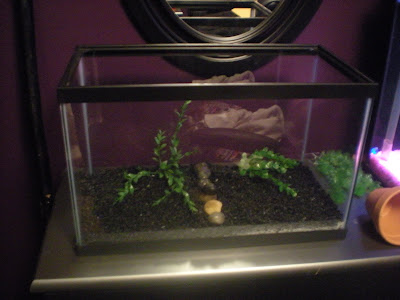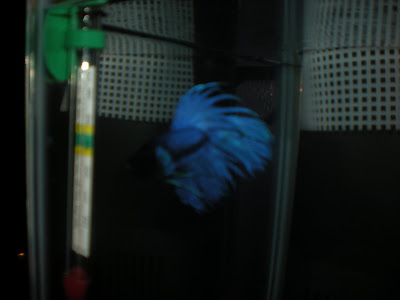Although I've had bettas before, I never really took full responsibility for caring for one until I enrolled in college. After one semester, I realize I was glad I got a betta. Now I have two, and two goldfish to boot. (But I play favorites, obviously.) So if you're a college kid looking for a new pet, then consider a betta for the following reasons:
Size: Bettas don't need a lot of room. There are plenty of desktop aquariums that fit perfectly on a desk or nightstand. Because they can breathe air from the surface they don't need a filter either, so long as you perform regular safe water changes.
Cost: Full-sized aquariums can cost a boatload to start and maintain, but effective betta tanks can be set up for less than $50 initially, and then less than $10 a month to maintain.
Ease: College is pretty chaotic, and adding a pet into the mix can be problematic. But bettas are relatively easy to care for. Give regular water changes, feed on a regular basis, and betta maintenance can take as little as an hour a week.
Style: Bettas come in a variety of colors and fin types, so it can be fairly simple to find a betta that will continue to impress you and your lucky roommate. You can even find a betta to match room decor if you look hard enough.
Pet Restrictions: Most college dorms don't allow pets like dogs, cats, rats, gerbils, reptiles, and the like. However, dorms seem pretty lax when it comes to fish. Talk to your dorm manager beforehand, and more than likely, they will agree to let you keep a betta.
Personality: Bettas aren't dogs or cats, but they do develop personalities (or at least we project personalities on them) and can show little quirks to make them even more adorable.
Stress Release: Remember all those science and psychology classes? Well both fields are in agreement that watching fish relieves a fair amount of stress. This can be most helpful during midterms and finals week. Your roommates may appreciate them too.
Of course, as a college kid, you will need to take a few things into account before you get a betta:
Roommates: Make sure your roommates are OK with you keeping a fish. You may need to ask them for feed your pet from time to time, plus it's just courteous. Asking them about it can also help break the ice for new roommates.
Schedule: Schedules can become tangled, gnarled messes, and that's just with classes. Add sports, music, clubs, and visiting home, and you may not have as much time as you think to take care of a betta. Make sure you have the proper time to devote to your pet.
The Dorm: Bettas need a constant temperature to stay healthy. If your dorm room is falling apart (and there are some that are) or if there are a lot of drafts, you may want to either fix it up or reconsider getting a betta.
Planning: You'll probably head back home for holidays and special occassions, but what about your betta? If it's more than a day or two, you may need to ask your roommate, or even take your betta with you. Bettas can be OK with short car travels, but don't make them a common thing.














